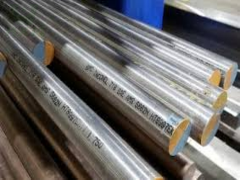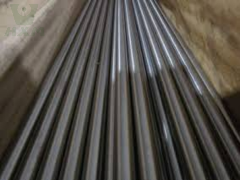Huaxiao Metal – A Top Hastelloy Alloy Manufacturer in China
Huaxiao Metal is a leading Hastelloy alloy supplier in China, offering a wide range of high-performance Hastelloy alloys including Hastelloy C22, Hastelloy C276, Hastelloy C-2000, Hastelloy X, Hastelloy B3, Hastelloy C4, and more. As a trusted Hastelloy alloy supplier, we provide only the highest-quality materials for demanding industrial applications.
Our Hastelloy alloys are known for their exceptional resistance to high-temperature oxidation, corrosion, and their outstanding mechanical properties, making them ideal for industries like aerospace, chemical processing, petrochemical, and power generation. Whether you need Hastelloy C276, Hastelloy C22, or Hastelloy X, we offer a broad selection of alloys to meet your specific requirements.
As a leading Hastelloy alloy supplier, we specialize in providing Hastelloy C276, Hastelloy C22, Hastelloy X, and other alloys with unmatched strength and durability. Our products are perfect for extreme environments, offering superior performance in heat exchangers, reactors, turbines, and more.
With a wide range of high-performance Hastelloy alloys in stock and competitive prices, we ensure reliable delivery and tailored solutions to meet your business needs. As a trusted Hastelloy alloy supplier, we guarantee that our products will exceed your expectations in the most demanding applications. Contact us today to explore our selection of Hastelloy alloys and find the right material for your industrial requirements.
Hastelloy Alloy Products
Hastelloy Alloy C-4
Hastelloy Alloy C-4 Hastelloy Alloy C-4: High-Performance Nickel-Chromium-Molybdenum Alloy for Corrosive Environments Hastelloy C-4 is a high-performance, corrosion-resistant alloy primarily composed of nickel, chromium, and
Hastelloy Alloy C
Hastelloy Alloy C Hastelloy Alloy C: Superior Corrosion-Resistant Nickel-Chromium-Molybdenum Alloy Hastelloy Alloy C is a highly corrosion-resistant, nickel-based alloy primarily composed of nickel (approximately 50–60%),
Hastelloy Alloy B
Hastelloy Alloy B Hastelloy Alloy B: Highly Corrosion-Resistant Nickel-Molybdenum Alloy for Harsh Chemical Environments Hastelloy Alloy B is a nickel-molybdenum alloy known for its exceptional
Hastelloy Alloy Classification
Classification of Hastelloy Alloys:
Hastelloy alloys are available in various grades, each designed to meet the performance requirements of demanding industrial applications. As a trusted Hastelloy alloy supplier, we offer a broad range of Hastelloy alloys, including Hastelloy C22, Hastelloy C276, Hastelloy C-2000, Hastelloy X, Hastelloy B3, Hastelloy C4, and more. Some of the most commonly used Hastelloy alloys we supply include:
Hastelloy C22: Known for its excellent resistance to a wide range of corrosive environments, particularly in chemical processing and marine applications, Hastelloy C22 is widely used in industries requiring high resistance to pitting, stress corrosion cracking, and oxidation. As a leading Hastelloy C22 alloy supplier, we offer this alloy for the most demanding conditions.
Hastelloy C276: This highly versatile alloy is known for its outstanding resistance to a variety of aggressive chemicals and environments. It is commonly used in the chemical processing, aerospace, and marine industries. As a trusted Hastelloy C276 supplier, we ensure that our products offer excellent performance even in the most challenging environments.
Hastelloy C-2000: Known for its superior resistance to both oxidizing and reducing environments, Hastelloy C-2000 is widely used in chemical reactors and heat exchangers. As a Hastelloy C-2000 alloy supplier, we provide this alloy for industries where high performance and durability are required.
Hastelloy X: This alloy is known for its high strength and excellent resistance to oxidation at elevated temperatures, making it ideal for applications in gas turbines and aerospace industries. As a leading Hastelloy X alloy supplier, we offer this high-performance material for critical applications.
Hastelloy B3: With excellent resistance to hydrochloric acid and other aggressive chemicals, Hastelloy B3 is commonly used in applications like chemical processing and industrial environments. As a trusted Hastelloy B3 supplier, we ensure this alloy offers optimal corrosion resistance.
Hastelloy C4: This alloy has outstanding resistance to pitting and stress corrosion cracking in a variety of chemical environments. It is often used in applications such as flue gas desulfurization units and chemical reactors. We supply Hastelloy C4 alloy to meet the requirements of high-performance industries.
Hastelloy C276 vs Alloy 20: When comparing Hastelloy C276 with Alloy 20, the superior corrosion resistance of Hastelloy C276, especially in high-temperature environments, makes it the alloy of choice for many applications. As a leading Hastelloy C276 supplier, we ensure the best quality and performance for your applications.
Hastelloy Alloy X: Known for its high-temperature strength and oxidation resistance, Hastelloy X is widely used in gas turbines, aerospace, and other high-temperature industrial applications. As a key Hastelloy X alloy supplier, we offer this material for industries where reliability and durability are paramount.
Hastelloy Equivalent Materials: In cases where Hastelloy alloys may not be the best fit, we also offer Hastelloy equivalent materials that provide similar performance characteristics. Our team of experts helps you choose the right material for your needs, ensuring cost-effectiveness without sacrificing performance.
Hastelloy Alloy Composition: Each Hastelloy alloy features a specific composition designed to meet particular performance criteria. For example, Hastelloy C276 composition is designed for exceptional resistance to oxidation and corrosion, while Hastelloy C22 composition provides remarkable strength and resistance to chemical environments. As a trusted Hastelloy alloy supplier, we provide these alloys with accurate compositions to suit your needs.
Hastelloy C-2000 Strip Alloy: This alloy offers excellent resistance to a wide range of chemicals, and its strip form makes it ideal for use in heat exchangers and other industrial applications. As a reliable Hastelloy C-2000 strip alloy supplier, we offer this material for various industrial uses.
Hastelloy Material Grades: We supply a variety of Hastelloy material grades, ensuring you get the right alloy for your specific requirements. Our range includes Hastelloy C276, Hastelloy C22, and Hastelloy B3, each offering superior resistance to heat, corrosion, and stress cracking.
Price and Availability: As a leading Hastelloy alloy supplier, we offer competitive Hastelloy alloy prices without compromising on quality. Whether you are looking for Hastelloy C276 price, Hastelloy C22 price, or Hastelloy X alloy price, we offer cost-effective solutions for your business.
Hastelloy Supplier for Sale: We stock a wide range of Hastelloy alloys ready for immediate sale, ensuring quick turnaround times for your orders. As a trusted Hastelloy supplier in China, we provide high-quality products at competitive prices for clients worldwide.
Hastelloy Metal: Known for its exceptional corrosion resistance and mechanical properties, Hastelloy metal is ideal for use in high-temperature and high-stress environments. We are a reputable Hastelloy metal supplier, offering the best materials for your industrial needs.
As an established Hastelloy alloy supplier, we offer tailored solutions to meet the needs of various industries, including aerospace, chemical processing, petrochemical, and power generation. Whether you’re looking for Hastelloy C276, Hastelloy C22, Hastelloy B3, or other Hastelloy alloys, we provide high-quality products with excellent performance in the most challenging environments. Contact us today to learn more about our selection of Hastelloy alloys and find the right material for your application at competitive prices.
1.Hastelloy B
Composition:
Nickel (Balance), Molybdenum (28-34%), Iron (max 3%), Chromium (max 2%), Manganese (max 1%), Silicon (max 0.5%), Carbon (max 0.02%), Sulfur (max 0.01%).
Properties:
Hastelloy B is a nickel-molybdenum alloy known for excellent resistance to hydrochloric acid and other aggressive reducing environments. It offers outstanding protection against pitting, crevice corrosion, and stress corrosion cracking. The alloy also has good weldability and formability.
Applications:
Used in chemical processing equipment, reactors, heat exchangers, and tanks, especially in environments with high concentrations of sulfuric and hydrochloric acids. Ideal for harsh, reducing acid environments.
2.Hastelloy C
Composition:
Nickel (Balance), Chromium (14-17%), Molybdenum (15-17%), Iron (max 5%), Cobalt (max 2%), Carbon (max 0.02%).
Properties:
Hastelloy C is highly resistant to both oxidizing and reducing acids, offering excellent protection against pitting, stress corrosion cracking, and high-temperature oxidation. It maintains strength in harsh environments.
Applications:
Used in chemical processing, reactors, heat exchangers, and pollution control equipment, especially in environments with high acid concentrations and elevated temperatures.
3.Hastelloy C-4
Composition:
Nickel (Balance), Molybdenum (15-17%), Chromium (19-21%), Iron (max 5%), Cobalt (max 2%), Manganese (max 1%), Silicon (max 0.5%), Carbon (max 0.02%), Sulfur (max 0.01%).
Properties:
Hastelloy C-4 is known for its exceptional resistance to a wide range of corrosive environments, especially at elevated temperatures. It has excellent resistance to pitting, stress corrosion cracking, and oxidation in both oxidizing and reducing conditions. It also offers outstanding resistance to sulfuric and phosphoric acids, making it suitable for harsh chemical environments.
Applications:
Used in chemical processing, power generation, and pollution control equipment. Commonly found in reactors, heat exchangers, and equipment exposed to highly corrosive acids, especially sulfuric and phosphoric acids. Ideal for applications requiring high resistance to corrosion and high-temperature environments.
Hastelloy Alloy Advantages
Exceptional Corrosion Resistance: Hastelloy alloys, such as Hastelloy C-276, Hastelloy C-22, and Hastelloy C-2000, are renowned for their remarkable resistance to a wide range of aggressive corrosive environments, including sulfuric acid, hydrochloric acid, and chloride-rich media. This makes them ideal for use in chemical processing, marine, and high-temperature industrial applications. As a trusted Hastelloy alloy supplier, we offer a comprehensive range of Hastelloy products to meet the needs of industries that demand superior corrosion resistance.
Outstanding High-Temperature Performance: Hastelloy alloys, including Hastelloy X and Hastelloy C-276, are widely appreciated for their excellent performance at high temperatures. Their ability to maintain strength and resist oxidation in extreme environments makes them essential in the aerospace, power generation, and chemical processing sectors. As a leading supplier of Hastelloy alloys, we ensure the availability of high-performance materials for demanding high-temperature applications.
Superior Weldability and Fabrication: Hastelloy alloys, particularly Hastelloy C-4 and Hastelloy B3, are known for their excellent weldability and machinability, enabling the production of intricate and custom components for industrial use. Whether it’s Hastelloy C22 for chemical reactors or Hastelloy C276 for power plants, we provide alloys that are easy to weld and fabricate for complex applications. As a trusted supplier of Hastelloy alloys, we offer materials that meet the highest industry standards.
High Strength and Durability: Hastelloy alloys, such as Hastelloy X and Hastelloy C-276, are designed to offer exceptional strength and durability, even in the most corrosive and high-temperature environments. This makes them ideal for critical components like heat exchangers, turbines, and pressure vessels. As an experienced Hastelloy alloy supplier, we offer a range of high-strength materials that provide long-lasting performance in demanding industrial applications.
Cost-Effectiveness and Stock Availability: We maintain an extensive inventory of various Hastelloy alloys, including Hastelloy C-276, Hastelloy C-4, and Hastelloy X, to meet the needs of industries across the globe. By offering competitive prices and ensuring reliable delivery, we provide cost-effective solutions without compromising on quality. Whether you’re looking for Hastelloy alloy C-22 or Hastelloy B3 for sale, we ensure that your business receives premium materials at the best price.
Versatile Applications in Harsh Environments: Due to their exceptional resistance to corrosion, high-temperature strength, and mechanical properties, Hastelloy alloys are highly versatile. They are used in a wide variety of applications, from reactors and heat exchangers in the chemical industry to components in aerospace and nuclear power generation. As a reputable Hastelloy supplier, we provide alloys like Hastelloy C-276, Hastelloy C-22, and Hastelloy X for industries that require reliable performance in extreme conditions.
Superior Resistance to Stress Corrosion Cracking: Hastelloy alloys, especially Hastelloy C-276 and Hastelloy C-4, exhibit excellent resistance to stress corrosion cracking (SCC), making them suitable for applications where this is a concern, such as in chemical processing and marine environments. As a trusted supplier of Hastelloy C276, we ensure that our products provide maximum resistance to this type of failure, ensuring long-term performance in challenging conditions.
Reliable Solutions for Diverse Industries: Whether you’re in the chemical, petrochemical, power generation, or aerospace industries, Hastelloy alloys are trusted for their unparalleled performance. Our extensive range of Hastelloy alloys, including Hastelloy C22, Hastelloy C-2000, and Hastelloy C-276, ensures that we have the right material for your specific needs. As an established supplier, we offer high-quality products tailored to meet the unique requirements of different industries, ensuring reliability and durability in every application.
Applications of Hastelloy Alloy
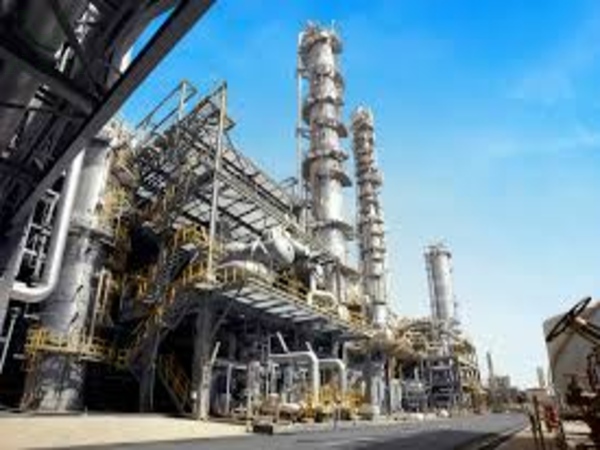
Chemical Processing
Hastelloy alloys, particularly Hastelloy C-276 and Hastelloy C-22, are widely used in the chemical processing industry due to their outstanding resistance to a wide range of aggressive chemicals, including sulfuric acid, hydrochloric acid, and chlorine compounds. These alloys are often found in reactors, heat exchangers, and other critical components in chemical plants that handle corrosive materials.

Aerospace and Aviation
In the aerospace industry, Hastelloy X is commonly used for components exposed to high temperatures and stresses, such as gas turbines, exhaust systems, and engine parts. The alloy's ability to withstand extreme temperatures while maintaining structural integrity makes it ideal for high-performance applications in the aerospace sector.
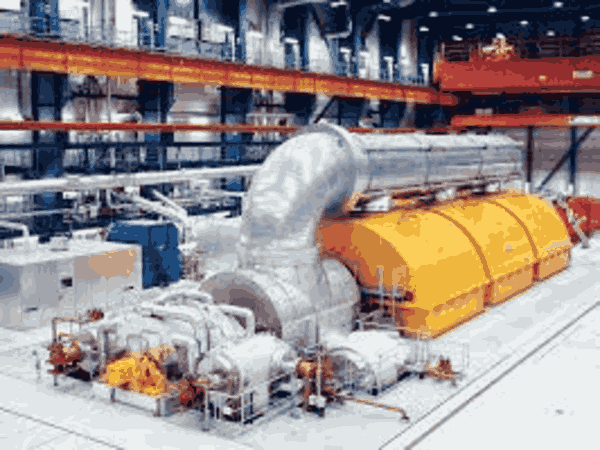
Power Generation
Hastelloy alloys, including Hastelloy C-276 and Hastelloy C-2000, are utilized in power generation applications that involve high-temperature and corrosive environments. These alloys are used in components like heat exchangers, reactors, and boiler tubes, where their resistance to oxidation and stress corrosion cracking ensures reliable performance and longevity.

Marine and Offshore Applications
Due to their excellent resistance to corrosion in seawater and other marine environments, Hastelloy C-4 and Hastelloy B3 are frequently used in marine and offshore industries. These alloys are often used for valves, pumps, and other critical components that must resist pitting, crevice corrosion, and chloride stress corrosion cracking.

Nuclear Power
Hastelloy alloys are also used in the nuclear industry for components that must withstand harsh conditions, including high radiation and elevated temperatures. Hastelloy C-22 is commonly used in reactor core materials, heat exchangers, and storage vessels for nuclear waste.
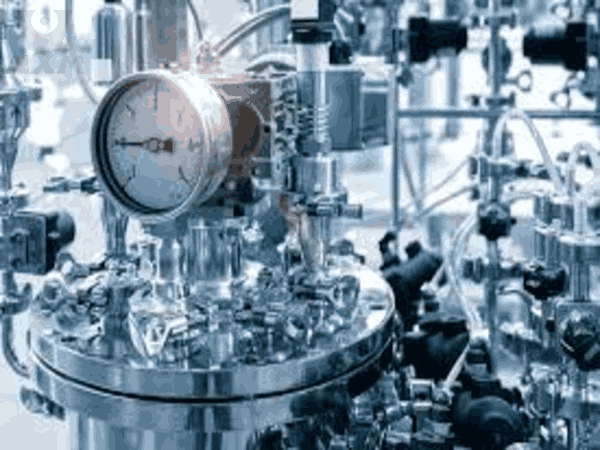
Pharmaceutical and Food Processing
Hastelloy alloys are ideal for pharmaceutical and food processing equipment because of their resistance to aggressive cleaning agents and sterilization processes. Alloys like Hastelloy C-276 are used in tanks, pipes, and reactors where contamination and corrosion can compromise safety and quality.
If you are unsure about the applications of hastelloy alloys in various industries, you can contact us, Hastelloy alloy supplier, to learn more.
FAQ
1. What is the composition of Hastelloy C-276?
The composition of Hastelloy C-276 includes:
- Nickel (57-63%)
- Chromium (14.5-16.5%)
- Molybdenum (15-17%)
- Iron (4-7%)
- Tungsten (3-4%)
- Cobalt (max 2.5%)
- Other elements: Manganese, Silicon, Carbon, Phosphorus, and Sulfur in trace amounts.
2. Hastelloy C22 vs C276?
Hastelloy C22 and C276 are both nickel-based alloys, but C22 offers superior corrosion resistance, especially in oxidizing environments, while C276 is more commonly used in high-temperature, acidic, and reducing environments. C22 is more resistant to a wider range of chemicals, particularly chlorides and oxidizing acids.



